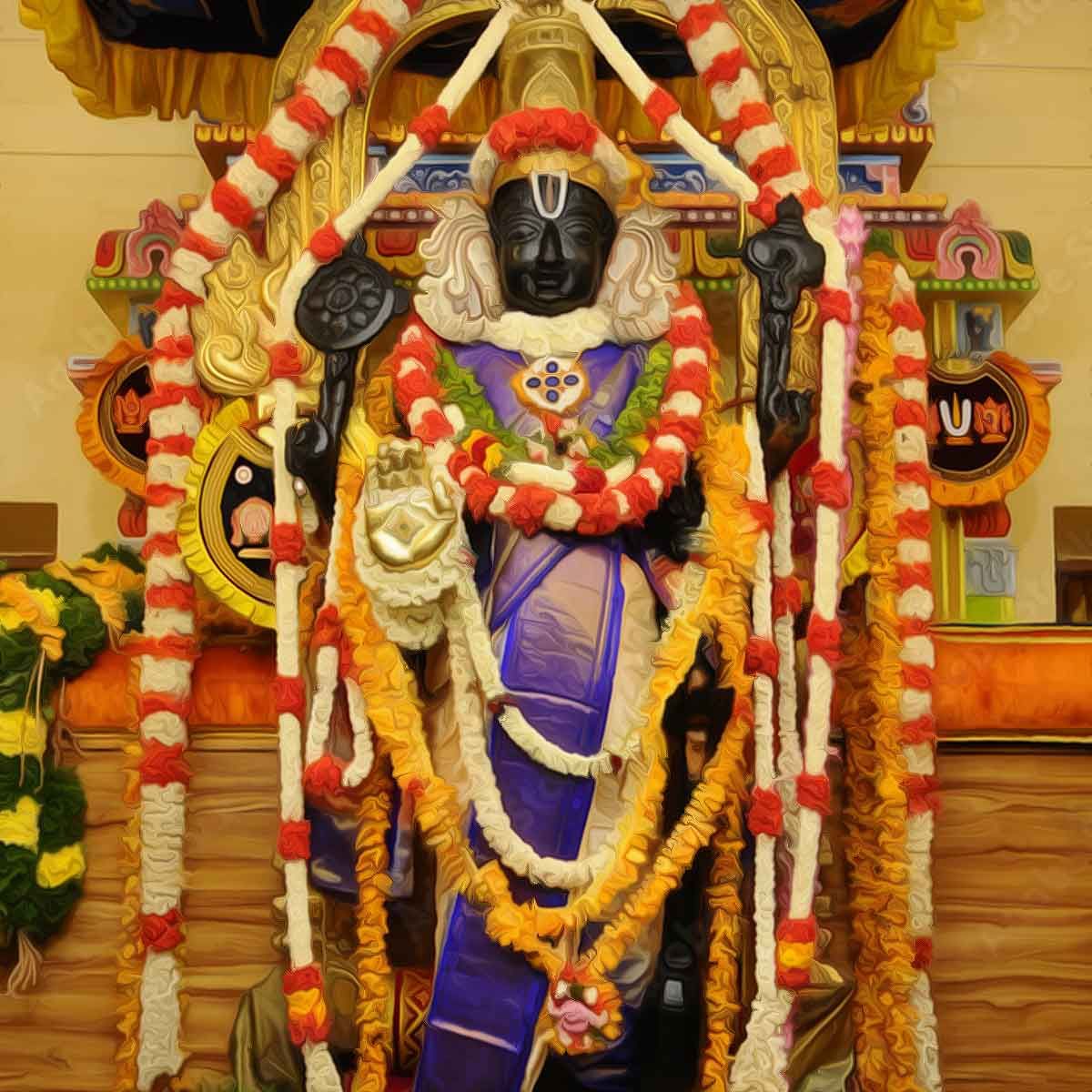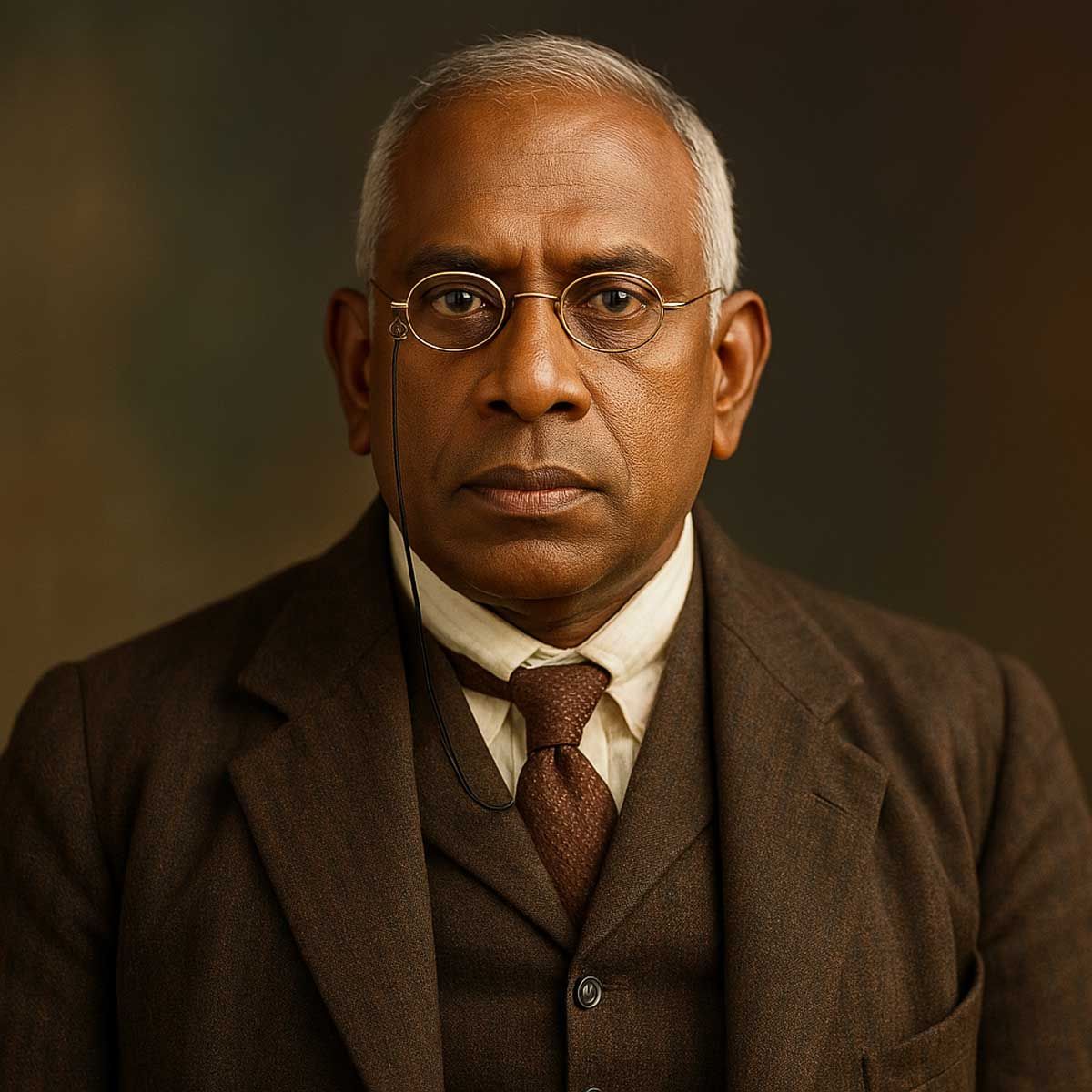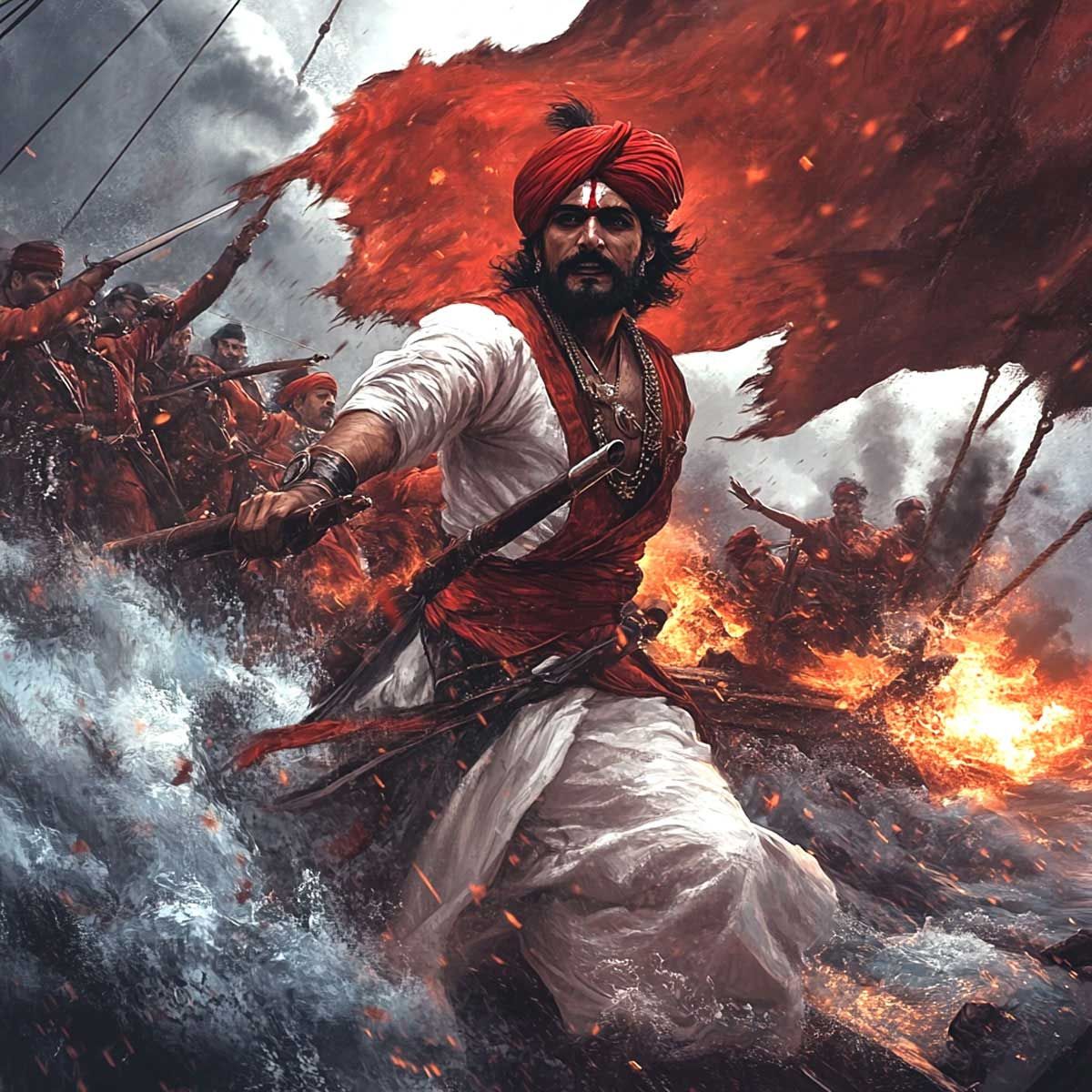More Coverage
Twitter Coverage
Satyaagrah
Written on
Satyaagrah
Written on
Satyaagrah
Written on
Satyaagrah
Written on
Satyaagrah
Written on
Join Satyaagrah Social Media
"Your sacred space is where you can find yourself again and again": Athi Varadaraja, an incarnation of Vishnu is the original Vigraha of Varadaraja Perumal Temple preserved in an underground chamber of temple tank and is brought out once every 40yrs

The Temple Varadharaja Perumal Temple located in the city of Kanchipuram in Tamil Nadu is dedicated to Lord Vishnu. It is one of the 108 Divya Desams dedicated to Lord Vishnu and is of immense religious importance.
|
This temple is facing towards the west with five tiered Rajagopuram. The Rajagopuram is about 160 feet (49 m) tall. There is another gopuram on the eastern side. This gopuram has seven tiers and is about 180 feet (55 m) tall. The eastern gopuram is taller than the western gopuram, which is contrasting with large temples where the Rajagopuram is the tallest one. The temple covers an area of about 23 acres (93,000 m2).
There are about 32 shrines, 19 Vimanas, 389 pillared halls (most having the lion-type Yali sculpture), and sacred tanks some of which are located outside the complex.
Varadharaja Perumal Temple is a part of the trio Mumurtivasam along with Ekambareswarar and Kamakshi Amman Temples. The temple is also known as Perumal Koil and is believed to be highly sacred in Vaishnavism. Visitors can explore the enormous temple complex that has 32 shrines and other features built according to ancient temple architecture.
The temple is also famous for its Stone chain. This temple has a unique idol of Lord Vishnu made of wood. The idol is kept in a silver box and is immersed in water. Locals believe that the region received good rainfall after the idol is wholly submerged in water.
The temple and stories related to it have been mentioned in the Vedanta Desika, Thirtha Prabandha Peyalvar, Bhoothathalvar, and several compositions created by Muthuswami and Tyagaraja Dikshitar in the 18th century.
The majestic architecture of the temple complex and the intricate carvings are sure to mesmerize one and all. The serene vibe of this sacred spot is so surreal and unexplainable that one really has to visit the temple to experience it.
|
Astounding facts of Varadaraja Perumal temple, Kanchipuram
- This temple is one of the huge Vishnu temples like Srirangam Ranganathar temple in Tamil Nadu, covering an area of 23 acres (93,000 m2) of prime land.
- It was first built in 1053 AD by the great Chola rulers and later. Kulottunga Chola I and Vikrama Chola were instrumental in expanding the temple. The 14th-century Chola rulers, later, built the gopurams - towers and huge walls.
- The belief has been that Nadivarman was the first builder of this temple.
- Innumerable Hindu temples came under attack during the reign of the 17th-century Mogul ruler Aurangazeb, a well-known tyrannical ruler and a Hindu bigot. Anticipating trouble in 1688, the main idol of Perumal was secretly shifted to Udayarpalayam, (now in Tiruchirapalli District). The main idol was brought back to Kanchi only in 1710 once the threat of Muslim invasion had ceased and normalcy was restored.
- The Temple records are not clear about the role of Gen. Todarmal in bringing the lord's idol from Udayarpalayam. However, the chieftain of that village was not happy about taking the idol back to Kanchi. Paramahamsa Parivajakacharya Attan Jeer took the initiative and brought the idols back to Sri Varadaraja Perumal temple, Kanchipuram.
- The temple has a rare possession of a Maharkandi - a costly necklace that is adorned by the deity during special temple festivals. It is purported to be a gift from Robert Clive of the East India Company, who laid the foundation for the British Empire. The temple records fail to mention the first name. Clive chose the occasion of the Garuda seva festival to present the valuable necklace, now termed Clive's Maharagundi, to the Hindu deity. It was a good gesture on the part of the young British Officer. It is likely that the donor could be Robert Clive's son Edward Clive who was the Governor of the Madras Presidency (1799-1805). That who the donor of the Maharagundi is controversial. Anyway, the credit goes to Clive's family and his descendants.
- The Nayak rulers Achutaraya and Vira Narasingaraya Saluva Nayaka endowed many villages to the temple to maintain it, according to inscriptions dated 1532CE (record of 1919).In the 13th century - vide inscriptions in the temple, the Hoysala rulers, gifted a crown to the presiding deity.
- This huge temple has three outer corridors (prakarams) namely Azhwar Prakaram, Madai Palli Prakaram, and Thiru Malai Prakaram.
- Within the temple complex there are 32 shrines, 19 vimanams (towers), and 389 ornate pillars, supporting various mandaps - halls. Many pillars have lion-type yali sculptures that are common in many Hindu temples of Tamil Nadu.
- Like many Hindu temples, some sacred tanks (integral parts of the temple) are located outside the complex.
- The west-facing main Garbagraha/sanctum can be accessed via a 130 feet tall, 7-tiered Rajagopuram (main gateway tower). Its height is less than the East tower and it is a rare temple design in which the Rajagopuram is smaller than the other one.
- Among the fascinating wonders of this temple is the most astonishing huge stone chain. It is simply an architectural and artistic masterpiece entirely made of a single stone with a series of rings strung together without breaking the continuity.
🕉 Exquisitely Carved Ornate pillars in 100 pillared hall at Sri Varadaraja Perumal temple,Kanchipuram #TamilNadu
— Satyaagrah (@satyaagrahindia) January 25, 2023
Each pillar is carved with depictions of Bhagwan’s Many Leelas. The equestrian pillars have a rider atop Yali -a part lion, part elephant & part horse animal🚩 pic.twitter.com/uGmdT5vobW - A big hall mandap support 100 ornate pillars; here one can see various episodes from the Ramayana and Mahabaratha beautifully carved in the stones. It is a masterpiece contribution from the rulers of Vijayanagara.
- The presiding deity is a 10 ft (3.0 m) tall idol made of granite in standing posture, while Thayar (goddess) is a 4 ft (1.2 m) stone image in sitting posture
- Yet another unique feature in this temple is the presence of a huge wooden image of Perumal (Vishnu) made of fig wood (in Tamil Athi maram), besides the main stone image. The wooden image is believed to be in a silver box and is in the temple water tank {Anaandasaras). It is taken out every 40 years after water is pumped out. After cleaning and other rituals, the wooden image is kept for darshan for a particular period and after that, it is kept under water till the next periodic cleaning.
- Yet another unique aspect of this temple is its popular huge umbrella used on festival days.
- Vedanta Desika, an equally revered saint like Ramanuja, attracted by the divine grace of the lord, patronized this temple in his literary works.
- Among the Carnatic music trinity, Tyagaraja and Muthuswami Dikshitar(18th century) composed compositions for the temple festivals. Thirumangai Alvar, Bhoothathalvar, and Peyalvar sang devotional hymns in praise of the lord.
- Goddess Perundevi Thayar is in the third prakara and the worship tradition here has been that the devotees must pray to the goddess first before offering prayer or puja to the main deity.
- The Thulabara Mandapa was built in 1532 by the Vijayanagara ruler Achutaraya. It consists of four small halls and here offering like rice, etc., equal to the body weight of the devotee(s) is made to the deity. In the days of yore, rulers used to make gold and silver as thulaparam offerings (equal to the weight of the body) to the temple as an expression of gratitude to the god.
- The seven prakaras/corridors are called Pradakshina Padha, Hastagiri Pradakshana, Madapalli Pragara, Alavandar Pragara, and Azhwar Thiruveedhi. One could see a lot of shrines in the Alavandar Pragara.
- The temple car festival here is famous and the temple car was a gift from Sri. Krishnadeva Raya in 1517 CE.
- The temple has 16th-century paintings of the Vijayanagar kings and they need periodic maintenance. Like many Vaishnava temples, there is a shrine for Chakratazhwar on the eastern side of the temple tank. There are seven festival idols (Urchavar) of Sudarshana depicted within the same Chakra.
- The shrine has two different images and hence has two entrances. There are two entrances to the shrine as the two images are considered to be separate. The shrine is said to have been built during the reign of Kulothunga III in 1191 CE by Ilavazhagan Kalingarayan of Nettur as seen from the inscriptions in the temple.
The administration of the temple is under the Hindu Religious and Charitable Endowment (HR & CE) of the Government of Tamil Nadu.
 Support Us
Support Us
Satyagraha was born from the heart of our land, with an undying aim to unveil the true essence of Bharat. It seeks to illuminate the hidden tales of our valiant freedom fighters and the rich chronicles that haven't yet sung their complete melody in the mainstream.
While platforms like NDTV and 'The Wire' effortlessly garner funds under the banner of safeguarding democracy, we at Satyagraha walk a different path. Our strength and resonance come from you. In this journey to weave a stronger Bharat, every little contribution amplifies our voice. Let's come together, contribute as you can, and champion the true spirit of our nation.
 |  |  |
| ICICI Bank of Satyaagrah | Razorpay Bank of Satyaagrah | PayPal Bank of Satyaagrah - For International Payments |
If all above doesn't work, then try the LINK below:
Please share the article on other platforms
DISCLAIMER: The author is solely responsible for the views expressed in this article. The author carries the responsibility for citing and/or licensing of images utilized within the text. The website also frequently uses non-commercial images for representational purposes only in line with the article. We are not responsible for the authenticity of such images. If some images have a copyright issue, we request the person/entity to contact us at This email address is being protected from spambots. You need JavaScript enabled to view it. and we will take the necessary actions to resolve the issue.
Related Articles
- "Festivals are like a map charting our spiritual progress in God": India is a land of temples and unique rituals, one such followed by devotees in a Karnataka Temple is Agni Keli, symbolizing the victory of good over evil integral to our cultural heritage
- Dwarkadhish Temple in Dwarka - The Magical Land of Lord Krishna
- "Miracles are not contrary to nature, but only contrary to what we know about nature": Behold the sacred marvel nestled within the heart of Shillong, Meghalaya—the Swayambho Shiv Ling in Mawjymbuin Caves drawing devotees from all corners of the country
- Lakshmi Narasimha Swamy Temple, Antarvedi, Andhra Pradesh
- 1200 years old rarest idol of Lord Narasimha and devotee Prahlada identified in Qutub Minar complex by renowned archaeologist Dharamveer Sharma: special attraction for religious and researching community
- Once again lampooning Hindu religious sentiments, TN HRCE approved a project to build a fish market on temple land using temple money
- DMK Govt’s move to take over the Ayodhya mandapam using Tamil Nadu HRCE department failed utterly after Madras HC set aside the order: Dravidianists had a meltdown over a win for Hindus
- Hindus voluntarily removed gates of a temple extended outside legal limit ahead of anti-encroachment drive by the NDMC in Delhi’s Jahangirpuri: Gate was installed for security in a Muslim-dominated neighbourhood
- Muslim community headed by Attar Hussain converted 'Guru Ki Sarai' into Mosque by intimidating a Sikh family in Patiala, Sikh symbols replaced by Islamic symbols: Situation tense as Hindu organisations protest
- Ahmad Abbasi, reportedly a chemical engineer from IIT Bombay tries to enter Gorakhnath Temple shouting ‘Allahu Akbar’, injures two cops with a sharp weapon: Uttar Pradesh
- Temple land in Thiruvannamalai, once a sanctum of spirituality, now besieged by the rise of an ugly shopping complex, devotees decry the greed of @tnhrcedept officials, as heritage is bartered for commerce, endangering the venerable East Gopuram
- Mamata Banerjee led Bengal govt orders to remove ‘unauthorised’ temples and shrines from public places: Asks state police to provide assistance to DMs of 8 districts for the same
- Telangana police lathi-charge innocent Hindu devotees at Komuravelli Temple during Mahashivaratri, igniting widespread anger against Revanth Reddy govt for violating fundamental & religious rights in Siddipet, Public outcry urges accountability & justice
- "Three things cannot be long hidden: the sun, the moon, and the truth": Krishna Janmabhoomi ~ Mathura court ordered official survey of Shahi Idgah mosque, report to be submitted by 20 Jan 2023, Aurangzeb built mosque after demolition of Keshav Dev Temple
- "तिरुपति प्रसादम": TTD blacklisted the supplier after confirming the desecration of Prasadam with beef fat and pig fat adulteration, as Chandrababu Naidu earlier exposed this shocking betrayal, while Jagan Reddy continues to reject the accusations
























